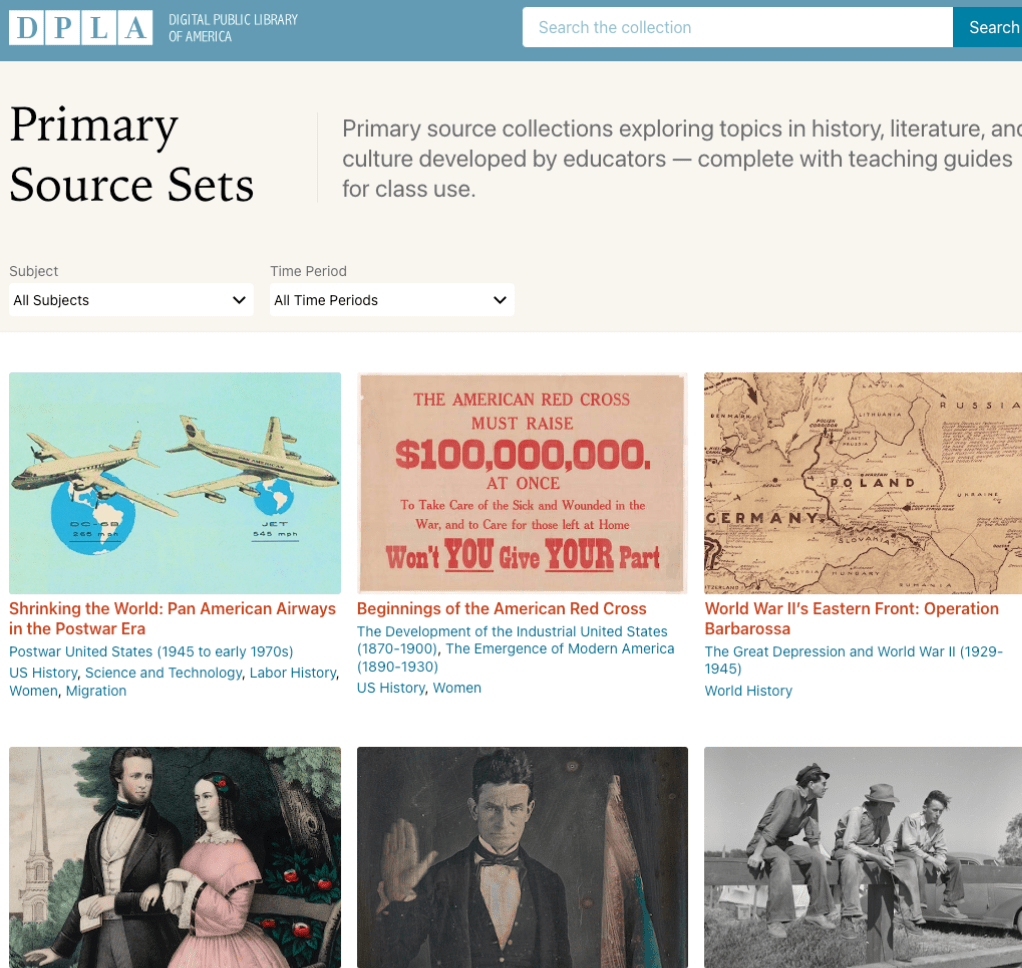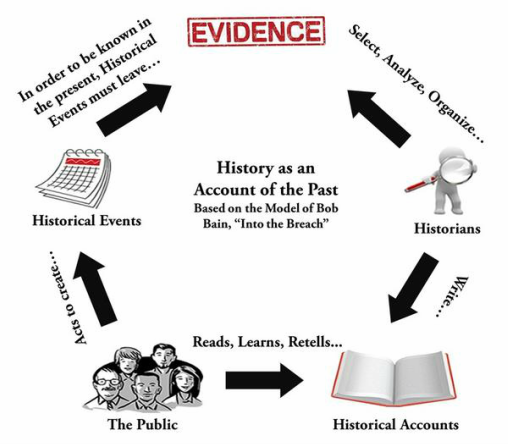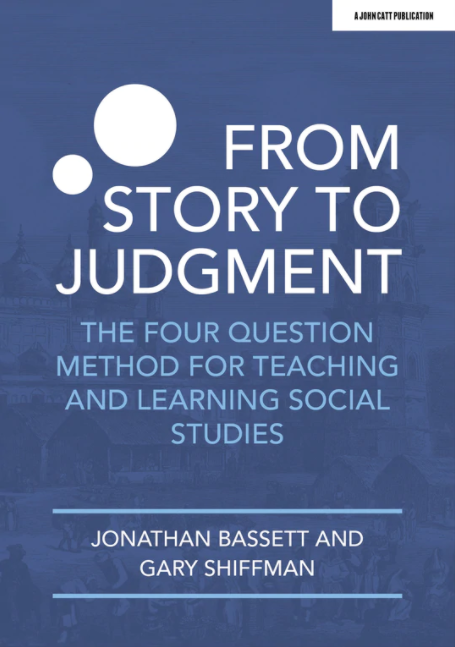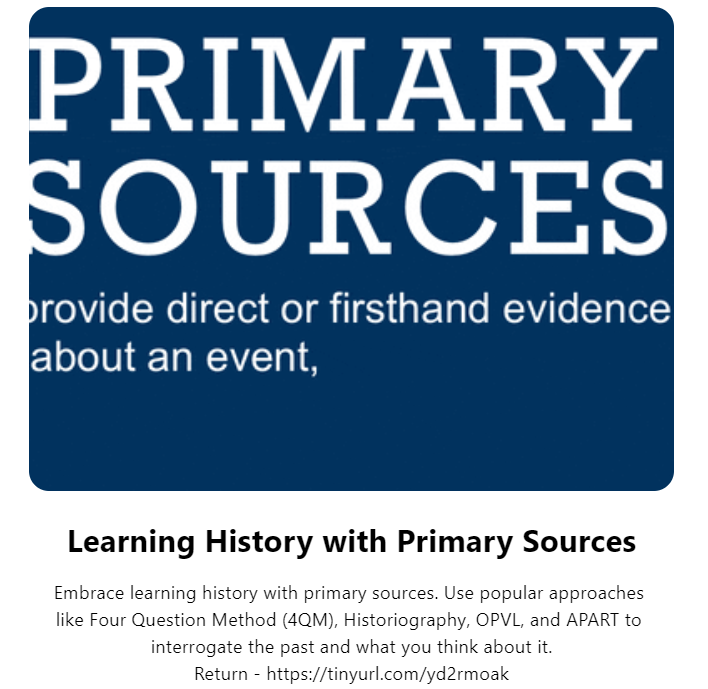Are you teaching history or social studies this year and looking for new tools and resources to incorporate into your lessons? As you prepare to go back to school, you may find yourself looking for a few new arrows for your teaching quiver. If so, you will find this roundup of excellent tools and resources for teaching history useful. We’ll explore several categories:
- Primary Sources
- Teaching Maps
- Interactive Resources
Let’s take a look at resources available for teaching history, and how you can learn more.
Did You Know?
EduProtocols resources are available for teaching social studies and history! Explore some resources and watch a conversation about using EduProtocols in Social Studies.
1. Primary Sources
Looking for primary sources to work with in history class? It never hurts to revisit “What is a primary source?”.
There are a lot of history and social studies resources featuring primary source material. Some include tidy searches like Gilder Lehrman Institute. Others require a bit more content curation. Let’s take a look at a selection of primary historical source data:
- Chronicling America
- Primary Source Sets
- Library of Congress
- Brooklyn Public Library Primary Source Packets
Some resources specific to Texas:
- Abilene Library Consortium – The Portal to Texas History
- Archive Collections
- Avalon Project – Texas From Independence to Annexation 1836-1846
- Civil Rights in Black and Brown
- CONTENTdm
- Dallas Morning News Historical Archive
- Digital Collections
- Early Texas Almanac Articles, 1857-1911
- Explore Galveston’s History
- Fort Worth Public Library Digital Archives
- Houston Chronicle
- Newspapers.com
- Sanborn Maps of Texas – Perry-Castañeda Map Collection
- Texas Constitution and Statutes
- The Portal to Texas History
- Texas Historical Newspapers
- Texas Slavery Project
- TSHA
Pairing Primary Sources with Strategies
You can pair information from primary sources with specific strategies such as:
These strategies allow students to get more hands-on and process information.
Creating Historical Artifacts
What’s more, encourage students to create their own historical artifacts, such as:
- Digital collections
- Digital documentaries
- Digital visualizations
- Infographics
- Maps
- Multimedia essays
- Social media essays
Digital tools that make the creation of these artifacts easier abound. These options “…allow students agency in demonstrating their knowledge” (source).
Not sure how to get started teaching history with primary sources? Read what Larry Ferlazzo has to say on the subject. He cites several different educators who offer their perspectives and methodology on teaching history with primary sources.
2. Terra Incognita: Teaching Maps
While traveling in England in my youth, I stumbled upon a map store in a small town. It featured beautiful maps and map replicas that captured my eye, whisking me away into the past. I studied the borders of the known world at the time the map was drawn with interest. There was something magical about seeking out dangerous beasts and mythical creatures at maps edge.
Students of history may also find reading maps from yesteryear and making their own maps of great interest. I couldn’t agree more with this quote from the History of Cartography website:
“People come to know the world the way they come to map it—through their perceptions of how its elements are connected and of how they should move among them…by situating the map at the heart of cultural life and revealing its relationship to society, science, and religion…. It is trying to define a new set of relationships between maps and the physical world that involve more than geometric correspondence. It is in essence a new map of human attempts to chart the world.”
—Edward Rothstein, New York Times, as cited at source
Additional Articles on Teaching Maps
You may already be familiar with teaching maps. If not, you might find this collection of TCEA blog entries helpful as resources for teaching history with maps:
- Make History Interactive with HistoryMaps
- Map-Making Resources and Tools to Teach Critical Thinking
- How to Make Interactive Maps with Google Slides and Jamboard
- Teaching at Every Level with Data-Rich Digital Maps
- Game Designed to Save the World
- StoryMapJS: Creating Immersive Social Studies Education
- Google Earth: Lewis and Clark
- Bring Geography to Life with Interactive Maps
Map Tools and Resources
With those ideas and resources for using maps for teaching history in mind, here are a few more tools. You will find these helpful and can apply many of the great ideas in the blog entries to these.
- BouncyMaps
- History Maps
- Interactive Map Template
- StoryMap
- Texas General Land Office’s collection of interactive content.
- Tour Creator
3. Interactive Resources
As an educator, I eschewed interactive resources as distractions from students doing and making. Over time, my perspective shifted as the available tools allowed for more interaction. Here is a list of great interactive resources for teaching history to explore, and you can also find lists of ideas for using interactive resources online.
- Cool New Interactives from the National Constitution Center
- Constitution Facts
- Digital History
- Finding a Sequence
- Grid References
- iCivics
- Identify Countries on the Map
- NASA Latitude/Longitude Finder
- Scale Maps
- Smithsonian’s History Explorer
- Spotlight
- Symbols and Keys
- White Out/Black Out
- World Capitals
- Zoom In
Want to connect game-based learning with history and/or social studies? Be sure to explore Microsoft’s Minecraft and take advantage of virtual world-building with Minetest (free).
Bonus Tool: Use Curipod to Help Craft Lessons
Let’s take a moment to look at a technology tool replete with lessons, resources, and content. In fact, it comes highly recommended by educator Stephanie Howell who says, “I have recently fallen in love with Curipod” (source: email list message, 07/24/2023).
Want to write lessons with AI help? Wish you had a collection of lessons and resources for teaching history? You might check out the free Curipod website. You can sign up at no cost, and find a wealth of resources online. A search on history yields a host of “curipod” lessons for history and geography. Stephanie Howell shares a walkthrough of Curipod’s tools, and you can learn more about this tool via Curipod’s YouTube channel.
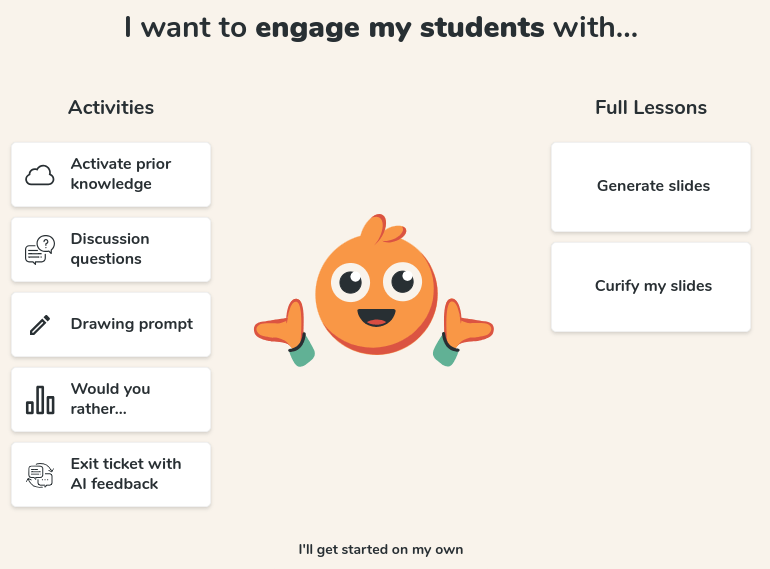
Explore Curiopod on your own and view free tier details
I hope you’ve found these tools and resources for teaching history and social studies helpful and interesting. Do you plan to incorporate some of these in the coming school year? Let us know how it goes in the comments. And if you have a favorite resource or tool to share, please let us know!

